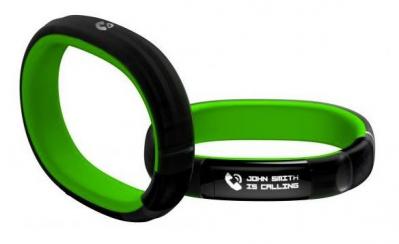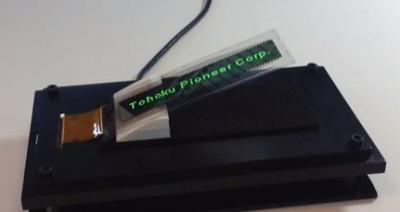Update: just after posting my article, Samsung annonced the Gear Fit, a fitness band with a 1.84" Super AMOLED panel. Perhaps my reasoning was all wrong, and high-resolution, color displays may take over this new market as well.
Passive Matrix OLEDs (PMOLEDs) use a simple driver, which restricts the resolution and efficiency of the display, but also enables it to be produced easily and relatively on the cheap. The first OLED displays on the market (in 1998) were PMOLED, made by Pioneer, used in car audio systems.

The PMOLED market grew in the past, up until 2006. Back then, the main application for those displays was the sub-display on clamshell phones. But then Apple launched the iPhone, and since then the clamshell design lost its popularity very quickly - and the PMOLED market is in decline ever since.
 Samsung SGH-E715 (2004)
Samsung SGH-E715 (2004)
Of course, those new smartphones kick started the AMOLED market - and helped it grow from virtually nothing in 2006 to over $10 billion in 2013. But now there's a new hype - wearable devices, and it'll be interesting to see whether this will help the PMOLED market grow again. One thing is certain - many companies are adopting PMOLEDs in their new fitness bands. In the past 2 months alone, we've seen LG, Huawei and Razr announce new smart bands that include PMOLED displays.
Huawei's TalkBand B1 (announced earlier today) reportedly uses a flexible OLED. I'm not sure if the report is accurate, but it seems likely that renewed interest in PMOLEDs will spur some new innovation. Flexible PMOLEDs have been demonstrated for years now by Futaba and Pioneer and both companies aim to start producing panels in 2014.
 Flexible PMOLED prototype, Pioneer
Flexible PMOLED prototype, Pioneer
The smart wearable market is just taking off, but at least in this early stage it seems that many device markets are choosing PMOLED displays over LCDs - mostly due to their thin form factor, lightweight, power efficiency and clear images. Will these actually help to lift the PMOLED market? we'll have to wait and see.

